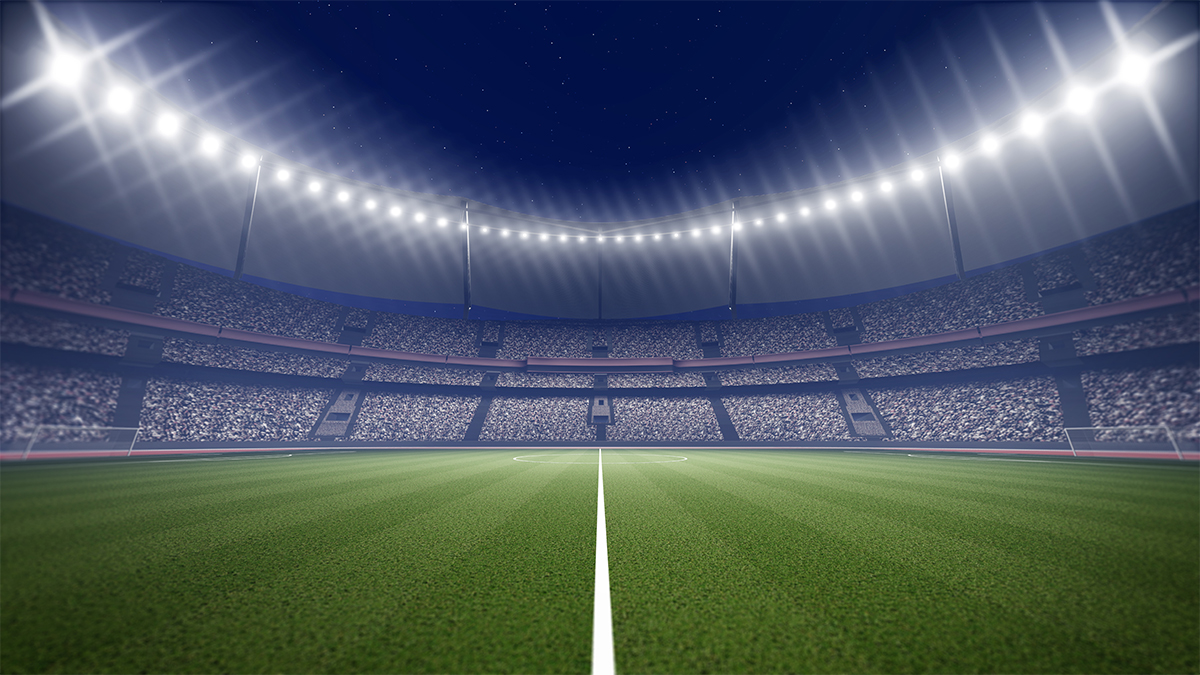LED stadium lights have become the industry standard for lighting sporting venues because of their unmatched endurance, energy efficiency, and performance. However, with a plethora of options available in the market, choosing the right LED stadium lights can be a daunting task. This article aims to provide a comprehensive guide on the factors to consider when selecting LED lights for sports stadiums, ensuring optimal performance and maximum benefits.
The Importance Of LED Stadium Lighting
Before considering the factors, it’s essential to understand why LED stadium lighting is crucial for sports venues. High-pressure sodium or metal halide lamps are examples of conventional lighting sources; LED lights provide better brightness, uniformity, and color rendering. They provide flicker-free illumination, reducing eye strain for players and spectators alike. Moreover, LED lights are highly energy-efficient, resulting in significant cost savings and reduced carbon footprint over the long term.
Lumens And Lux: Determining The Right Light Output
The intended brightness, which is commonly expressed in lumens and lux, is one of the main factors to be taken into account when selecting LED stadium lights. A surface area’s light intensity is measured in lux, but the total amount of visible light emitted by the fixture is expressed in lumens. For sports venues, such as football fields or baseball stadiums, achieving optimal lux levels is crucial for player visibility and audience enjoyment. Factors such as mounting height, beam angle, and fixture placement influence the required lumens and lux levels, which should be carefully calculated to ensure uniform illumination across the playing surface.
Color Temperature And Color Rendering Index (CRI)
When choosing LED stadium lighting, color temperature and color rendering index (CRI) are crucial variables to take into account because they affect the brightness and perceived quality of light. Color temperature, measured in Kelvin (K), determines the warmth or coolness of light. For sports applications, a color temperature in the range of 5000K to 6500K is recommended, as it provides bright, daylight-like illumination, enhancing visibility and contrast on the field. Additionally, a high CRI value ensures accurate color representation, allowing players to distinguish between different objects and surfaces with precision.
Beam Angle And Distribution
The beam angle of LED stadium lights determines the spread of light and plays a crucial role in achieving uniform illumination across the playing surface. Narrow beam angles are suitable for focused lighting applications, such as illuminating specific areas of the field or highlighting architectural features. On the other hand, wide beam angles provide broad coverage and are ideal for large sports stadiums or arenas. It’s essential to consider the beam angle and distribution pattern of LED fixtures to ensure consistent light levels and minimal glare for players and spectators.
Durability And Weather Resistance
Sports stadiums are exposed to various environmental factors, including rain, wind, and temperature fluctuations, which can impact the performance and longevity of LED lights. Therefore, selecting fixtures with robust construction and weather-resistant features is paramount. Look for LED stadium lights with IP65 or higher ingress protection ratings, indicating their ability to withstand dust, moisture, and other outdoor elements. Additionally, opt for fixtures with durable materials such as aluminum or stainless steel housing, as they offer enhanced durability and corrosion resistance in harsh outdoor environments.
Energy Efficiency And Sustainability
One of the primary advantages of LED stadium lighting is its exceptional energy efficiency, which translates to significant cost savings and environmental benefits. When selecting LED fixtures, consider their energy consumption and efficacy, measured in lumens per watt (lm/W). Choose fixtures with high efficacy ratings to maximize energy savings without compromising on performance. Additionally, look for fixtures with advanced lighting controls, such as dimming capabilities and motion sensors, to further optimize energy usage based on specific usage patterns and requirements.
Maintenance And Lifecycle Costs
When it comes to maintenance, LED stadium lights are well known for having a longer lifespan than traditional lighting systems. However, it’s essential to consider the overall lifecycle costs when evaluating different LED fixtures. Over the course of a fixture’s existence, factors including warranty coverage, dependability, and ease of maintenance all contribute to the overall cost of ownership. Select reputable businesses that have a proven track record of dependability and responsive customer service to minimize downtime and ensure trouble-free LED stadium lighting system operation.
Lighting Control Systems
In addition to selecting the right LED fixtures, integrating advanced lighting control systems can further enhance the performance and efficiency of stadium lighting. Precise control over light levels, scheduling of lighting events, and interaction with other building systems like security and HVAC are all made possible by lighting management systems. Consider implementing intelligent lighting controls such as daylight harvesting, which automatically adjusts light output based on natural daylight levels, or zoning capabilities, which enable customized lighting scenarios for different areas of the stadium. By leveraging smart lighting control technologies, sports venues can optimize energy usage, minimize light pollution, and create dynamic lighting effects to enhance the spectator experience.
Glare Control And Light Pollution
Glare control and light pollution mitigation are essential considerations when designing LED stadium lighting systems. Glare, caused by excessive brightness or contrast, can impact player visibility and cause discomfort for spectators. To minimize glare, choose LED fixtures with precise optics and glare-reducing features such as baffles or shields. Additionally, carefully position fixtures and adjust mounting angles to direct light away from players’ line of sight and minimize reflections. Furthermore, lighting designs that comply with local regulations and industry standards for light pollution control, such as the International Dark-Sky Association’s guidelines, should be implemented to minimize the environmental impact and preserve the natural nighttime environment.
Future-Proofing And Scalability
Future-proof LED stadium lighting systems must be able to adjust to shifting needs and new trends as technology advances. Consider scalability and flexibility when selecting LED fixtures and lighting control systems, allowing for easy expansion or upgrades as needed. Look for modular designs and interoperable components that support seamless integration with future technologies and enable incremental improvements over time. Additionally, stay informed about industry advancements and emerging innovations in LED lighting, such as wireless connectivity, Li-Fi technology, and smart grid integration, to capitalize on new opportunities for enhancing stadium lighting performance, connectivity, and sustainability.
Conclusion
Selecting LED stadium lights is a crucial choice that can have a big impact on a sports venue’s performance, energy efficiency, and overall experience. By considering factors such as lumens and lux levels, color temperature, beam angle, durability, energy efficiency, and maintenance costs, stakeholders can make informed decisions that optimize lighting performance while maximizing long-term benefits. With advancements in LED technology and a deeper understanding of lighting requirements, sports stadiums can continue to elevate the fan experience and set new standards for excellence in sports venue illumination.




